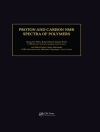Covers the structurally diverse secondary metabolites of medicinal plants, including their ethnopharmacological properties, biological activity, and production strategies
Secondary metabolites of plants are a treasure trove of novel compounds with potential pharmaceutical applications. Consequently, the nature of these metabolites as well as strategies for the targeted expression and/or purification is of high interest. Regarding their biological and pharmacological activity and ethnopharmacological properties, this book offers a comprehensive treatment of 100 plant species, including Abutilon, Aloe, Cannabis, Capsicum, Jasminum, Malva, Phyllanthus, Stellaria, Thymus, Vitis, Zingiber, and more. It also discusses the cell culture conditions and various strategies used for enhancing the production of targeted metabolites in plant cell cultures.
Secondary Metabolites of Medicinal Plants: Ethnopharmacological Properties, Biological Activity and Production Strategies is presented in four parts. Part I provides a complete introduction to the subject. Part II looks at the ethnomedicinal and pharmacological properties, chemical structures, and culture conditions of secondary metabolites. The third part examines the many strategies of secondary metabolites production, including: biotransformation; culture conditions; feeding of precursors; genetic transformation; immobilization; and oxygenation. The last section concludes with an overview of everything learned.
-Provides information on cell culture conditions and targeted extraction of secondary metabolites confirmed by relevant literature
-Presents the structures of secondary metabolites of 100 plant species together with their biological and pharmacological activity
-Discusses plant species regarding their distribution, habitat, and ethnopharmacalogical properties
-Presents strategies of secondary metabolites production, such as organ culture, p H, elicitation, hairy root cultures, light, and mutagenesis
Secondary Metabolites of Medicinal Plants is an important book for students, professionals, and biotechnologists interested in the biological and pharmacological activity and ethnopharmacological properties of plants.
Jadual kandungan
Part I Introduction
Part II Ethomedicinal and pharmacological properties, chemical structures, culture conditions of secondary metabolites
2.1 Abutilon species
2.2 Acacia species
2.3 Achyranthes species
2.4 Adhatoda species
2.5 Aegle species
2.6 Ageratina species
2.7 Ageratum species
2.8 Albizzia species
2.9 Alium species
2.10 Aloe species
2.11 Angelica species
2.12 Arnebia species
2.13 Artemisia species
2.14 Asaparagus species
2.15 Atropa species
2.16 Azadirachta species
2.17 Bryophyllum species
2.18 Camptotheca species
2.19 Cannabis species
2.20 Capsicum species
2.21 Carthamus species
2.22 Cassia species
2.23 Catharanthus species
2.24 Centella species
2.25 Cephalotaxus species
2.26 Chlorophytum species
2.27 Cinchona species
2.28 Citrulus species
2.29 Coleus species
2.30 Colocasia species
2.31 Commiphora species
2.32 Coptis species
2.33 Corydalis species
2.34 Crocus species
2.35 Curcuma species
2.36 Datura species
2.37 Dioscorea species
2.38 Erythroxylum species
2.39 Foeniculum species
2.40 Fumaria species
2.41 Gentiana species
2.42 Glycyrrhiza species
2.43 Heliotropium species
2.44 Hyocyamus species
2.45 Jasminum species
2.46 Larrea species
2.47 Lawsonia species
2.48 Linum species
2.49 Lithospermum species
2.50 Malva species
2.51 Matricaria species
2.52 Medicago species
2.53 Mitragyna species
2.54 Momordica species
2.55 Morinda species
2.56 Moringa species
2.57 Mucuna species
2.58 Nerium species
2.59 Nigella species
2.60 Ocimum species
2.61 Origanum species
2.62 Panax species
2.63 Papaver species
2.64 Peganum species
2.65 Pelargonium species
2.66 Petroselinium species
2.67 Phyllanthus species
2.68 Plantago species
2.69 Plumbago species
2.70 Podophyllum species
2.71 Polygonum species
2.72 Primula species
2.73 Rauwolfia species
2.74 Rhamnus species
2.75 Rubia species
2.76 Rumex species
2.77 Salix species
2.78 Salvia species
2.79 Scrophularia species
2.80 Sida species
2.81 Solanum species
2.82 Stellaria species
2.83 Stevia species
2.84 Strobilanthes species
2.85 Symphytum species
2.86 Tabernaemontana species
2.87 Taxus species
2.88 Terminalia species
2.89 Thymus species
2.90 Tinospora species
2.91 Tribulus species
2.92 Trifolium species
2.93 Trigonella species
2.94 Turnera species
2.95 Valeriana species
2.96 Verbena species
2.97 Veronica species
2.98 Vitis species
2.99 Withania species
2.100 Zingiber species
Part III Strategies of secondary metabolites production
3.1 Biotransformation
3.2 Culture conditions
3.3 Elicitation
3.4 Feeding of precursors
3.5 Genetic transformation
3.6 Hairy root cultures
3.7 Immobilization
3.8 Light
3.9 Mutagenesis
3.10 Organ culture
3.11 Oxygenation
3.12 p H
3.13 Product secretion
3.14 Secondary metabolites production by endophytic interaction
3.15 Selection of high yielding cell lines
3.16 Temperature
Part IV Conclusions
Mengenai Pengarang
Bharat Singh, Ph D, is an Associate Professor in the Department of Biotechnology at Amity University Rajasthan, Jaipur. He has authored five books on Biotechnology, presented more than 15 papers in various National and International Conferences, and has published 37 research papers in noted national and international journals.
Ram A. Sharma, Ph D, is an Associate Professor in the Department of Botany at the University of Rajasthan, Jaipur, where he teaches Plant Physiology and Biochemistry, Plant Biotechnology, Secondary Metabolites, Molecular Biology, and Agricultural Biotechnology. He has published over 100 research papers in many national and international journals, and presented papers in more than 50 conferences, some of which he has chaired.












